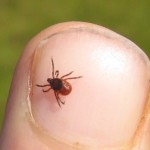Squirrel robots are on the loose near San Jose, and they’re helping scientists at the University of California, Davis understand how their fleshy counterparts interact with rattlesnakes.
When squirrels approach rattlesnakes, they wag their tail and use infrared radiation to signal radiation-sensitive rattlesnakes. What exactly they’re conveying is anybody’s guess, but it’s probably safe to say that “Come eat me” is not on the menu. The radiation flashing seems to shift the snakes’ behavior from predatory to defensive, according to a 2007 Proceedings of the National Academy of Sciences study from UC Davis.
When the researchers tested how infrared robo-tail wagging affected snake behavior in the lab, they noticed the snake spent less time exploring the chamber for food and more time in the “defensive postures of coiling and cocking-to-strike,” they wrote in the 2007 study. Tail-wagging, then, may be a squirrel’s way of posturing and discouraging their predators from striking out at them. The researchers claim rattlesnakes very rarely attack squirrels wagging their tail and those who do often miss. (In the video above, only the non-wagging critter got bit, but it looks like that snake must have had better aim than most.)
So why put yourself in a position to have your head chomped off?
Assuming the rattlesnake in the video, which was filmed during the more recent San Jose field studies, was cocked to strike, RoboSquirrel didn’t fare very well. A real squirrel may not have ended up as the rattlesnake’s main course, but injury might still have occurred.
Perhaps the tailed rodents may be assessing how dangerous the situation really is, the scientists wrote in a press release. But that seems like an ill-thought-out death mission. The researchers suggest perhaps snakes leave after encountering a wagging squirrel. If that’s true, then this strategy might be a way for squirrels to protect their vulnerable pups from being eaten by hungry snakes. In that context, that strategy seems more logical. Testing whether this happens in the wild might be easier (and less cruel) with an army of RoboSquirrels. If the hypothesis holds up, shooing away rattlesnakes by deploying furry androids could have other ecological consequences.







Comments are closed.